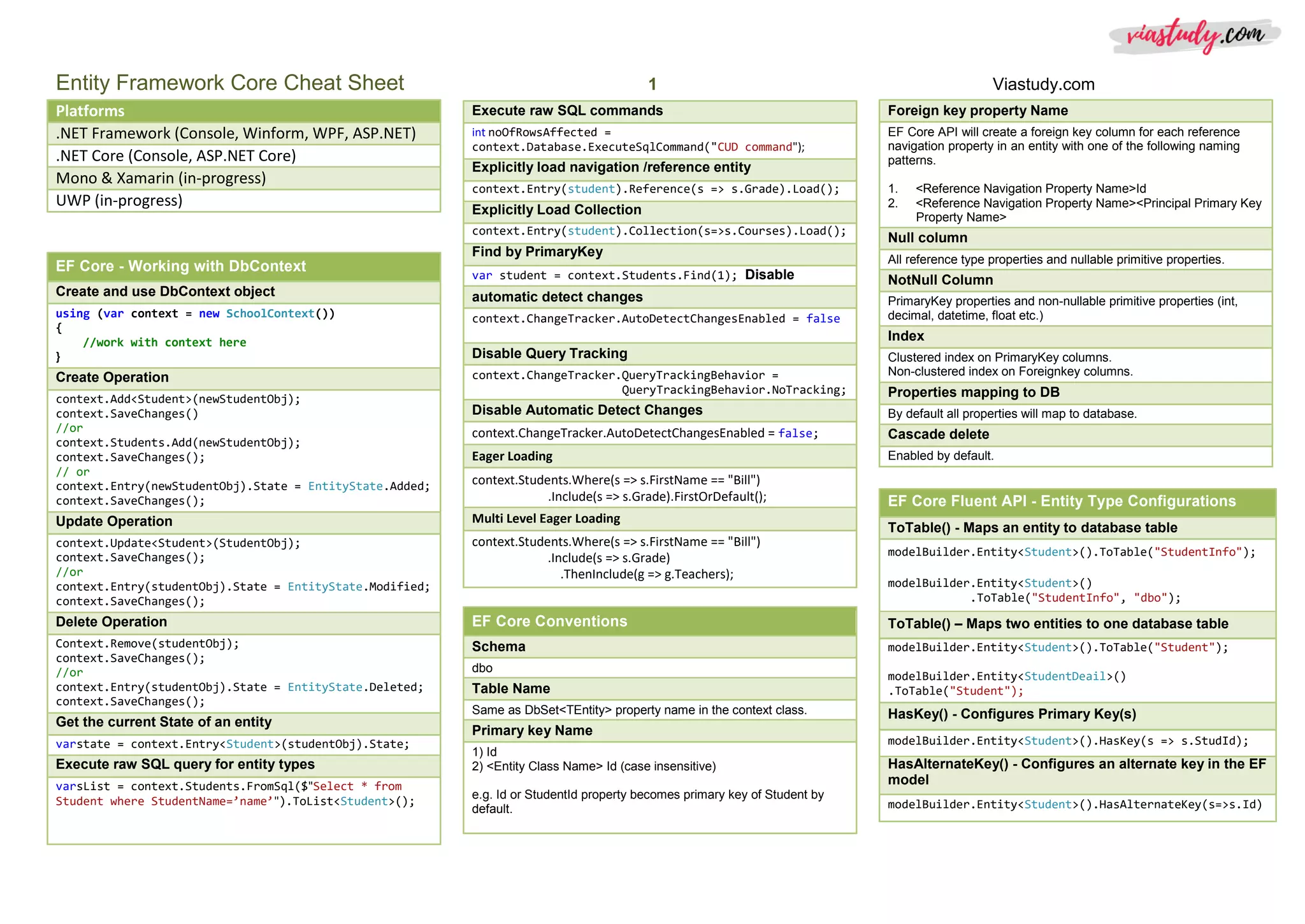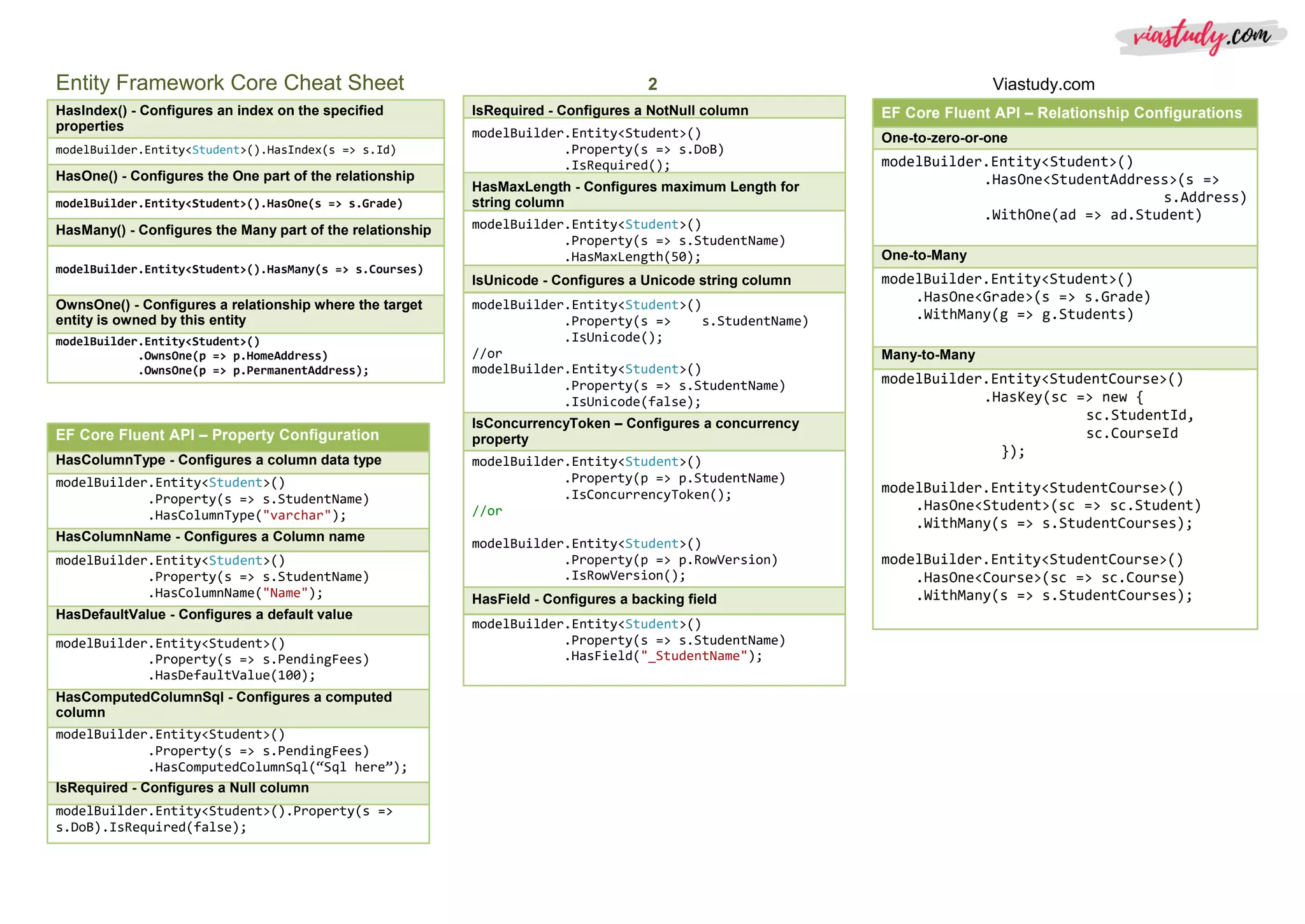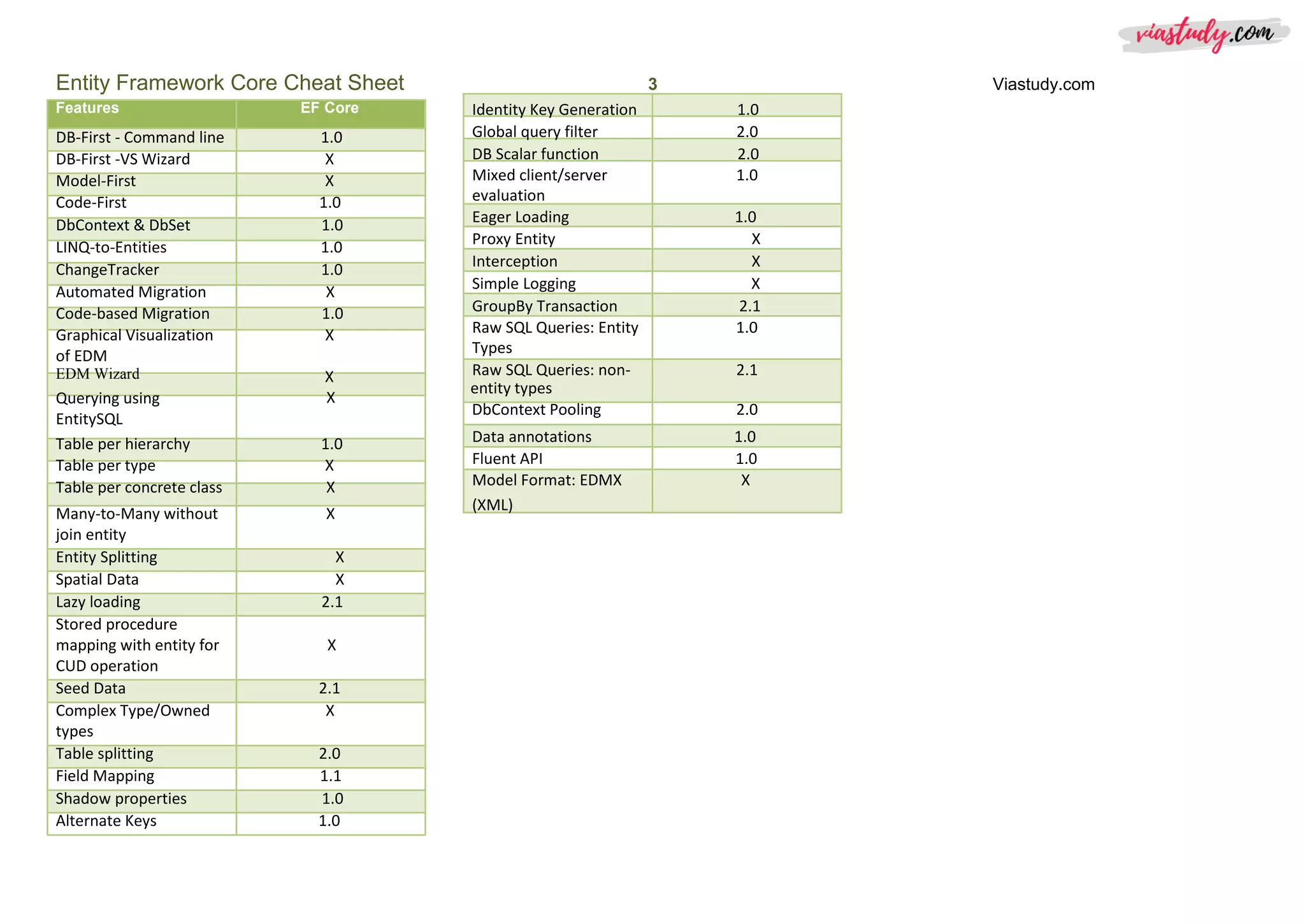This document provides an overview of Entity Framework Core, including supported platforms, common operations using the DbContext object, conventions for mapping entities to database tables, and configuration options using the fluent API. It also lists features that are supported in EF Core and those that are not yet supported or planned.


